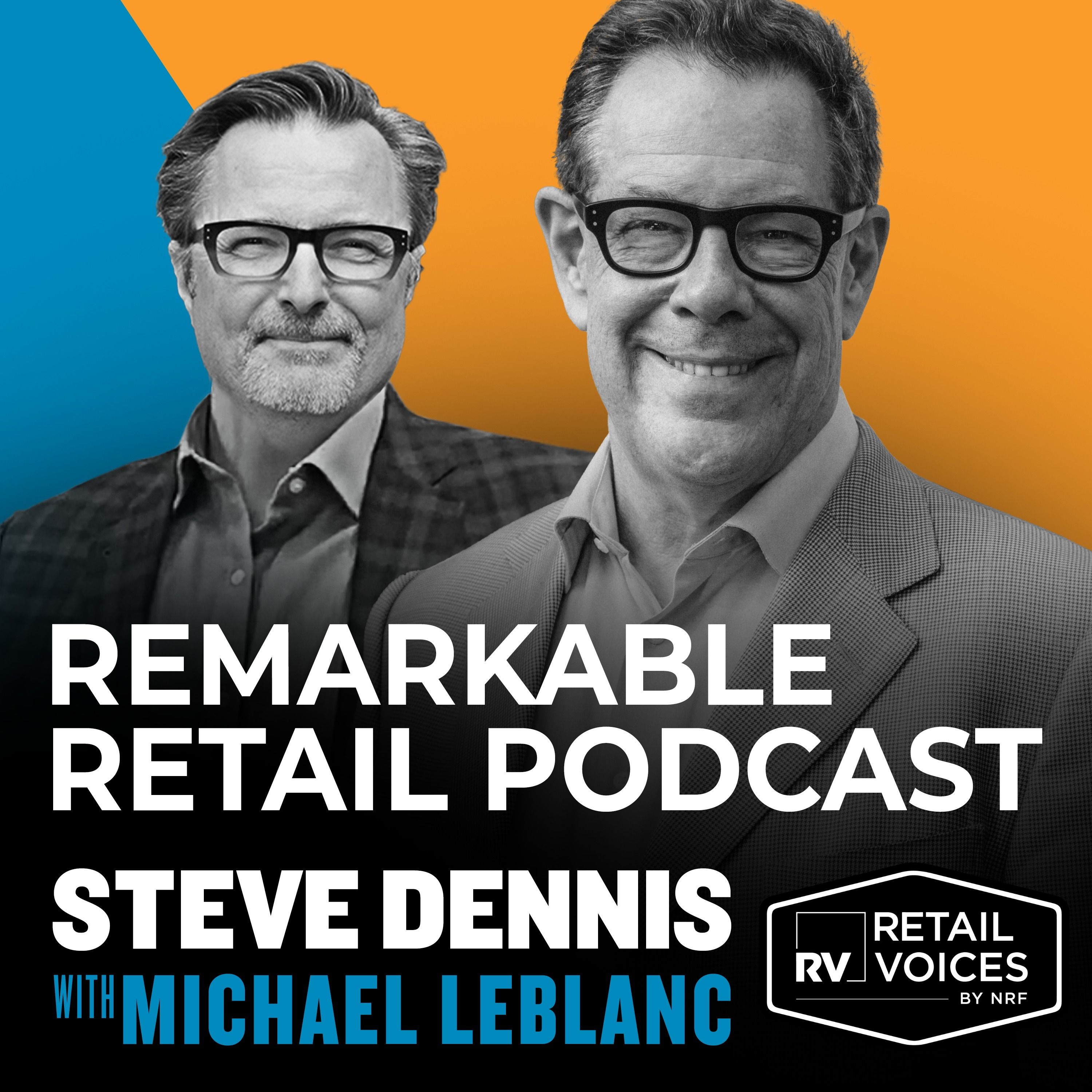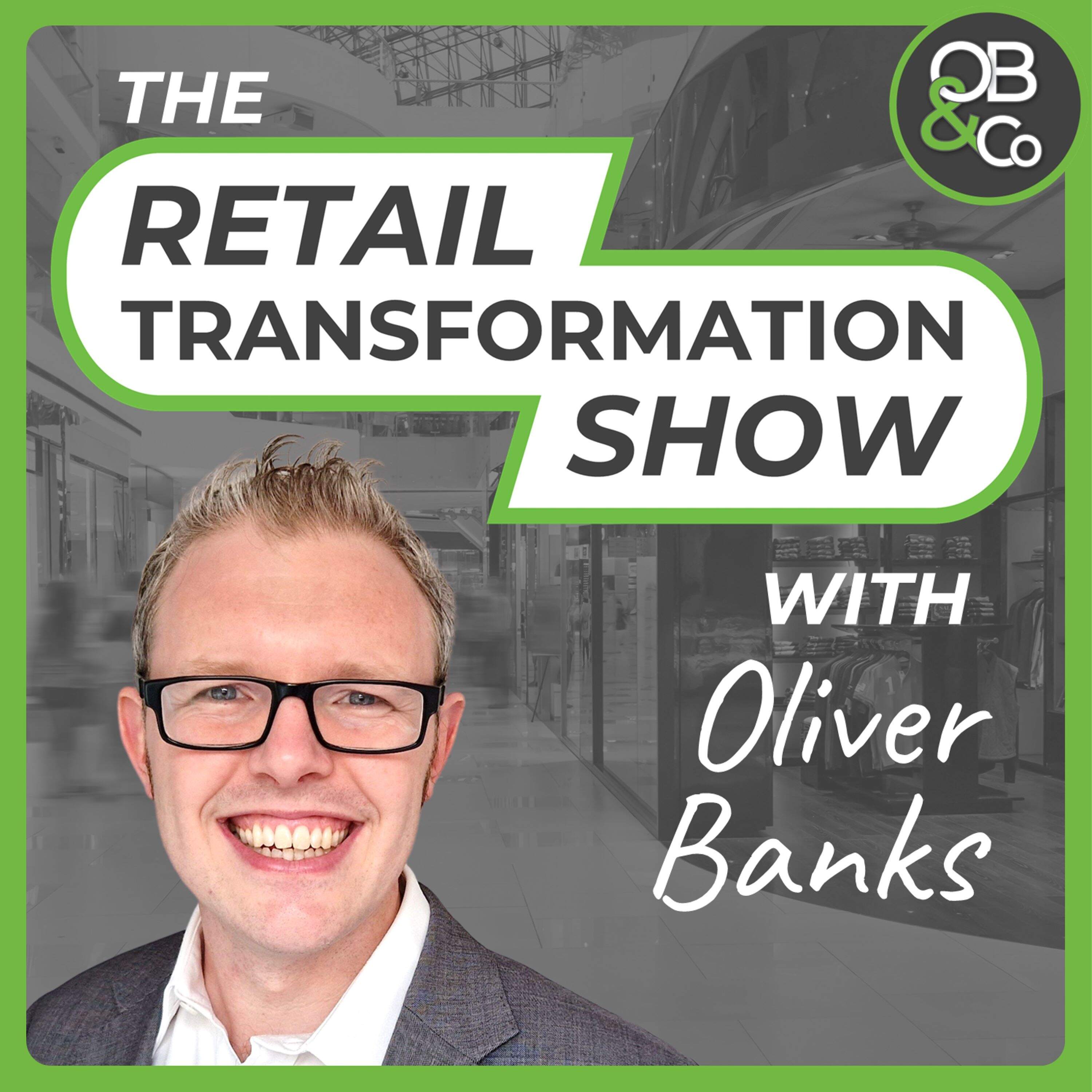
Pricing Heroes: The Retail Pricing Podcast for Practitioners & Executives
Pricing Heroes: The Best Retail Pricing Podcast for Practitioners and Executives
Your go-to pricing podcast for transforming strategy, boosting margins, and leading with confidence.
Pricing Heroes is the leading retail pricing podcast for pricing practitioners and retail executives focused on building smarter strategies, protecting margins, and earning customer trust. Each month, we feature exclusive interviews, case studies, and practical insights to help you implement the most effective pricing strategies for today’s retail environment.
Whether you're managing promotional calendars, navigating price perception, or scaling AI-powered pricing systems, Pricing Heroes offers the expert guidance and real-world perspective you need to lead with confidence.
🎙 Each episode includes:
- Expert Interviews: Candid conversations with top pricing professionals and retail innovators
- Case Study Analysis: Behind-the-scenes strategy breakdowns from across the industry
- Actionable Takeaways: Practical insights you can apply immediately in your organization
We explore the full landscape of pricing in retail — spanning e-commerce and in-store, global brands and regional players, and categories from fashion and grocery to electronics and beyond. Topics include:
- Innovative pricing technologies and emerging trends, like AI-powered pricing platforms
- Data-driven consumer behavior analysis
- Strategic solutions to complex pricing challenges
- Tactics to boost profit margins and market share
- Pricing topics making headline news
- Building and transforming pricing functions
Join a growing community of pricing professionals and industry leaders who tune into Pricing Heroes — the trusted pricing podcast for anyone shaping the future of retail strategy.
🗓 New episodes drop the last week of every month.
📲 Listen on Spotify, Apple Podcasts, Google Podcasts, or your favorite platform.
Sponsored by Competera — the leading pricing platform empowering retailers with AI-driven, customer-centric pricing solutions that maximize profitability while strengthening customer loyalty.
Pricing Heroes: The Retail Pricing Podcast for Practitioners & Executives
AI Pricing & Demand Forecasting Today: Insights from a Decade in Applied AI with Jayadeep Shitole
How is AI transforming the way retailers price products and forecast demand? In this episode of Pricing Heroes, the leading retail pricing podcast, we speak with Jayadeep Shitole, Principal Data Scientist of Applied AI and Machine Learning at Walmart Global Tech. With over a decade of experience building large-scale pricing and forecasting systems, Jayadeep shares expert insights on how retailers can implement AI-powered pricing strategies that are dynamic, transparent, and aligned with real business goals.
We cover:
- The shift from static to dynamic pricing algorithms
- A practical 4-step framework for AI pricing implementation
- How demand forecasting and pricing optimization work hand-in-hand
- Strategies for building trust in AI pricing systems
- How to use AI to respond to tariffs, economic shifts, and supply chain disruptions
- What’s next in retail AI—from real-time optimization to decision intelligence
Whether you're a pricing analyst, retail data scientist, or commercial leader, this episode offers actionable advice on how to future-proof your pricing strategy with AI. Subscribe to Pricing Heroes — the go-to podcast for pricing professionals driving innovation in retail.
Connect with Jayadeep Shitole on LinkedIn.
----------
Get your free copy of Get Ready for the Future Of Pricing with our A-Z Guide.
For more information about AI pricing solutions, check out our Corporate sponsor Competera.ai.
Aaron: Hello and welcome to Pricing Heroes, a podcast sponsored by Competera. This is a series of interviews with the best-in-class retail pricing experts driving bottom-line metrics for major retail brands and the industry as a whole.
Today's guest is Jayadeep Shitole. Principal Data Scientist of Applied AI and Machine Learning at Walmart Global Tech. Jayadeep has extensive expertise in AI pricing, demand forecasting, and decision intelligence, working on dynamic pricing algorithms for both e-commerce platforms and physical retail stores. His career spans roles at Walmart, Petco, and Opex Analytics, where he has built cutting-edge AI models for pricing, assortment planning, and predictive analytics.
We invited Jayadeep on the show to discuss his article: "Future of Retail: Dynamic Pricing, Demand Forecasting, and AI-Driven Decision-Making," which explores how AI is transforming real-time pricing optimization, predictive demand modeling, and next-gen AI applications like reinforcement learning and generative AI in retail.
Jayadeep, welcome to the show.
Jayadeep: Thank you for inviting me. I'm excited to chat about how machine learning and AI is transforming the retail pricing landscape. It's a real pleasure to be here on Pricing Heroes.
Aaron: Before we dive into your article, can you share a little bit about your career journey, what led you to specialize in AI pricing and demand forecasting?
Jayadeep: I have always been fascinated by how mathematics can solve real-world problems, and that curiosity led me to get my bachelor's and master's degrees in Applied Mathematics. My career started at a machine learning consulting firm, where I built machine learning solutions for clients across automotive, finance, and professional services industries.
It was an eye-opening experience to see how broadly AI could be applied and how it could solve complex problems at scale. I was also really fascinated by financial markets. So after my first job, I joined an R and D company that worked on developing trading algorithms for hedge funds using machine learning.
That was really exciting, but I wanted more impact on everyday life. So I came to the U.S. to do a master's in operations research, and that particular step opened the door for me to move into retail data science at a major pet retailer, where I joined a newly formed shopping intelligence group. That's where I realized how even small, tiny changes in pricing or demand forecasting can have a dramatic effect on both profitability and customer satisfaction.
It was a really powerful realization. From there, I moved to a major retailer's technology division and have spent the last four years applying AI solutions at scale to optimize pricing, forecasting, and so on.
Aaron: So you've worked on AI pricing models at several major retailers. What have been the biggest changes you've seen in AI pricing technologies over the past five years?
Jayadeep: I would like to highlight three major shifts. The first thing is from static to dynamic. We have moved away from simple rule-based pricing, like cost-plus or competitor matching, to far more dynamic data-driven algorithms. Especially in e-commerce, systems can update prices multiple times a day based on signals like competitor movements and local demand spikes.
The second thing I would say is accessibility of AI tools. With the rise of cloud computing and open-source libraries, even mid-market retailers now can adopt machine learning for pricing. It's no longer a luxury that's just only reserved for some of the largest companies in the world, but even mid-market retailers or retailers who are much smaller can use machine learning for pricing.
And then the third shift that I have seen is in explainability and transparency. Companies want to understand why algorithms recommend a certain price. They need to ensure that pricing models reflect not just profit goals, but also capture brand image and customer loyalty considerations or any other considerations that are really important for their brand.
And this demand has shaped how we build the machine learning models for pricing. Interpretable AI is one of the biggest shifts that I've seen in the last few years.
Aaron: Explainability is certainly crucial for the adoption of AI across all processes within an organization. So we hear that one of the biggest concerns retailers have about AI pricing is trust. Many worry about handing over pricing decisions to an algorithm. How can retailers ensure AI pricing is reliable, transparent, and aligned with business goals?
Jayadeep: I would say a human-in-the-loop approach is a great first start. Rather than automating everything from day one, you can let your pricing analysts and merch ops folks review and approve AI recommendations to build confidence. And using explainable AI techniques, you can also highlight which factors actually influenced your pricing decisions that can reduce a black box effect.
Beyond that, it's also important to embed business objectives and constraints directly into the model. If brand perception or ethical standards are really crucial, define those hard limits that your model can't override. Try to make sure that they can be objectively expressed and make them part of your optimization engine.
And then the last thing I would say, Aaron, is that ongoing monitoring, regular model retraining, validation and performance tracking can definitely ensure AI systems for pricing stay aligned with your goals.
Aaron: So it sounds like there are a lot of layers built in to ensure that businesses are not only relying on an AI model blindly to make these decisions, but there's a full-blown process end-to-end for ensuring, validating, and approving the AI recommendations that they are receiving.
Jayadeep: You're trying to forecast and then optimize for the objective that you care about. And the objective can be as complicated as possible as long as you can express it in a data-driven manner.
Some of the subjective-sounding things can also be embedded into your models. And then once you do that, you also want to make sure that you are tracking the performance of your pricing algorithms in such a way that whatever objectives that you are trying to optimize for are getting optimized.
Aaron: Yeah, that's true. And we've seen a lot of various approaches to the objectives that businesses try to achieve. So there is the perception that it's purely increasing profits, and to increase profits, that means increasing prices. But we've seen other business goals, for example, average total basket value or customer lifetime value, as a way to measure whether or not the prices are actually optimal for the business.
So sometimes it's not just about increasing prices, but it's about finding the best way to balance prices across the board in order to increase sales volumes and by increasing sales volumes, increasing profits.
Jayadeep: Yes, definitely. I will give you an example on that. So let's say you are a retailer who is trying to sell fresh groceries inside your store. Now for you, one of the most important things, is obviously if you're a profit-driven company to optimize for profits, but let's say your items are going to expire a lot of times without any kind of intervention.
You can create a lot of fresh food wastage. Now, at that point, what are the levers that you can pull? You can change the price, which is basically reduce the prices in such a way that it makes sense for your business, but at the same time, you are trying to make sure that the fresh food wastage is reduced.
So you can embed both of those things into your model when it's taking markdowns, which is basically just clearing out the inventory. And that is both good for the company and good for the consumers and good for the world because we are not going to create so much fresh food wastage.
Aaron: And it impacts so many other areas, right? So if the fresh produce is going bad, then that means someone has to remove it from the shelf and restock, or there might be fresh produce in the back not being stocked on the shelves to be sold on time.
So besides trust, what are other challenges that you've seen in implementing AI pricing? What keeps retailers from adopting it? Are there technical challenges, operational challenges, organizational challenges?
Jayadeep: I would say data quality is often the first hurdle. AI-driven pricing needs robust, timely data. Yet, even right now, many retailers still grapple with siloed information systems or outdated infrastructure. Organization readiness is another big factor. Going from manual rules-based methods to fully automated AI is a huge jump.
And not everybody is comfortable trusting an algorithm with such a critical function as pricing. Another big issue is trust. Retailers fear a black box that might not align with brand values or nuances like customer loyalty and brand perception. So these are the three main things that I think are the biggest challenges in the implementation.
But apart from that, while AI tools are now much more accessible than ever, they still require significant investment in talent and infrastructure. And that can be a tough sell if leadership hasn't seen a clear ROI right now. So that also stops a lot of retailers from taking a jump into this world.
Aaron: I 100 percent agree with you and we've heard it many times before. In fact, on the most recent episode of Pricing Heroes, several of our guests said that the biggest trends in 2025 will be reliance on better data quality.
And they believe that that is what will enable retailers to adopt AI pricing this year. In fact, being able to assess the available data, making sure that it is properly managed and accessible.
Probably the most costly aspect of adopting AI pricing isn't the actual AI pricing tools themselves, it is organizing the data.
Jayadeep: Yeah, totally agree on that. Totally agree.
Aaron: Okay. So your article explores how AI-driven decision making is transforming retail pricing. What are the biggest shifts in pricing strategy that AI is enabling today?
Jayadeep: What AI enables you to do is tailor strategies by geography, time of day, and even local events, allowing for very precise price adjustments. Second, in this fast-moving world, speed matters. And with AI, you can update prices multiple times a day in response to competitor moves, inventory swings or factors like weather, and that level of responsiveness was nearly impossible with manual processes.
And finally, AI supports a more holistic view as we already talked about. It's not just about chasing revenue. You can factor in brand positioning, ethics or even sustainability goals while optimizing for prices using AI-based pricing.
Aaron: So dynamic pricing is a big focus in retail today, and AI pricing is one enabler of dynamic pricing, but many retailers are struggling with setting competitive prices while maintaining margins within an ever-changing market. And hopefully by adopting AI and a more robust approach to dynamic pricing, they'll be able to overcome that.
Can you explain how retailers can leverage it effectively to support dynamic pricing strategies?
Jayadeep: Yeah, I'd say it comes down to four main steps. So the first one, as we already talked about, is data gathering, how to collect sales histories, competitor prices, website traffic, and external factors like holidays or weather, and anything else that you think can affect the demand for your business.
The second aspect is feature engineering. You take all of this raw data and turn it into meaningful signals for your model. And then the third thing is basically machine learning model training. You use this feature-engineered data and you train your machine learning algorithms like XGBoost or deep neural networks to predict demand.
And then you can test different price points against your specific goals. Once you have a trained machine learning model, now comes the most important thing, which is optimization and deployment. As we already talked about, it's not just about trying to optimize for profit. So you need to define what exactly you are trying to achieve.
So an optimization layer determines the final price, taking constraints like inventory or brand image into account. And for retailers who are just starting out, I would say the best approach is to build a solid data pipeline and then pilot a small set of products or even a single category. That way you can refine your models, understand the results, and then when you feel comfortable with this kind of strategy, you can expand gradually to your whole business.
Aaron: And have you found that this approach has been more effective than how dynamic pricing has worked in the past?
Jayadeep: I would say yes, because if you are jumping into the world of AI-based pricing or demand forecasting or assortment planning, any of these things, what you need to do is basically make sure that the business feels comfortable using them. It's a huge change from rule-based pricing to assortment planning and so on.
So the more visibility that you can create with these technologies, the better it is for business to embed their knowledge into the systems. So for example, if you go from collecting the raw data, converting that into meaningful signals, you can work with your business partners to understand what are some of the things that really move the needle. And then you can go back to step number one, which is collecting the raw data, and then come back to feature engineering and create features that can be really helpful for your model to learn from.
So the whole pipeline of 1, 2, 3, 4, which is data, features, model, and then optimization gives you enough runway in terms of creating the confidence, creating the trust. And that is also really helpful for the business to build these things with you, rather than you taking the data and trying to optimize for something that may or may not work at the end of the day.
Aaron: So part of the power behind AI in retail is that not only does it help to optimize pricing, but it can also help with demand forecasting, which is a crucial use case now in retail. So forecasting demand accurately is crucial for retailers to avoid overstocking or running out of products.
Can you explain how AI-based demand forecasting improves accuracy and helps retailers make better decisions?
Jayadeep: Sure. So traditional forecasting usually relied on time series methods that only considered historical trends. And that can overlook sudden shifts in demand or so many other factors that can affect the demand for a particular product. But what AI-based methods can incorporate is multiple factors like past sales, promotions, competitor moves, or even social media sentiment if you can get access to that data.
And then these AI-based methods can detect complex patterns that can give a much more holistic view in terms of forecasting the demand. They are much more accurate, and these machine learning models also adapt much faster to real-time data.
Let's say if a competitor suddenly drops prices or a storm causes a run on certain products, AI can quickly react and update the forecast. This definitely helps businesses to have fewer stockouts, less wastage, and much more efficient supply chains overall.
Aaron: And are you seeing retailers leverage AI pricing and demand forecasting together to influence existing stock or prices? So, for example, let's say that you see that there's a potential for a stockout, using real-time dynamic pricing to perhaps increase prices slightly to dissuade people from purchasing in bulk when it would lead to a stockout for a retailer.
Jayadeep: Yeah, I think demand forecasting and AI-based pricing go hand in hand because the demand of your product depends on the price that you are offering, right? So when you are building this AI-based demand forecasting, you are also trying to understand what levers you can pull, and how does that affect your demand?
So if you have some objective that you are trying to optimize for, which can be fewer stockouts, or understocking or overstocking, you can embed that into your optimization engine, forecast the demand, and then change prices to see what is going to be the impact of these changed prices on the demand.
And then come back to your final optimization. So we are definitely seeing a lot of this circular behavior where you obviously use machine learning and demand forecasting for planning your inventory, but then you can use the same models and then determine what is it that we can do to change our demand, to optimize for, as you said, fewer stockouts or less wastage.
Aaron: So looking ahead, what do you see as the next frontier for AI-powered pricing? Will we see more autonomous pricing systems or will human oversight remain crucial?
Jayadeep: I think autonomous or semi-autonomous pricing will become much more common, especially for high-volume, high-velocity product lines where real-time data is abundant and small margin improvements can definitely add up quickly. However, human oversight will remain vital, particularly for decisions that impact brand identity or have, let's say, ethical dimensions.
In practice, we'll likely have hybrid systems where AI automatically handles the routine rapid-fire pricing updates while humans oversee major strategic or brand-sensitive decisions. And this blend can allow retailers to capitalize on machine learning and AI speed and scale without losing the strategic insight that only people can provide, at least for now.
Aaron: I think that also frees up pricing leaders to engage more strategically with the executives that they should be partnering with, as well as working with merchandising teams, sales and marketing teams to better align strategy in general, and then being able to leverage the tools to implement that strategy quickly.
Oftentimes what we hear from pricing teams is that they don't feel like they're fully integrated into the decision-making process of the organization. And the biggest disconnects between the success of a pricing organization and the business itself is the lack of those relationships and a strong cross-functional dynamic between the pricing leaders and others across the organization.
So being able to rely on AI for rudimentary tasks will hopefully free pricing teams to become perhaps more focused on change management, relationship building and business development.
Jayadeep: Yeah, definitely. AI can take a huge role in managing the predictable parts of your business, and humans can definitely focus much more on the strategy and unpredictable parts of your business. So that makes a hundred percent sense to me.
Aaron: So there's been a lot of discussion recently in the U.S. about tariffs and how they might impact retailers. And we just heard in the news that the president of the U.S. is threatening to levy tariffs against Canada and Mexico. And these are two major trade partners with the U.S. This, of course, will also have impacts on other nations. Given AI's ability to process external factors like economic shifts, can AI pricing technologies that are available today help businesses navigate trade policies and supply chain disruptions?
Jayadeep: Yeah, that's a great question and very relevant right now. Tariffs and trade policies can definitely create major cost fluctuations practically overnight. AI-powered pricing models accelerate, as we have already discussed, integrating external data sources. In this case, data like tariff rates and other situations, currency changes or supplier lead times into their calculations.
So for instance, if tariffs drive up costs on certain products, an AI-driven model can quickly recommend whether to adjust retail prices or absorb costs or explore alternative suppliers. Retailers can also use AI-based simulations that we have talked about to explore different what-if scenarios like negotiating with a new supplier or bulk buying ahead of a tariff and see which approach optimally balances margins and customer loyalty or whatever other objectives that the business is trying to optimize for.
And in turbulent markets, I think this kind of data-driven agility is definitely invaluable compared to manual tool-based approaches.
Aaron: Do you know if there are any AI models that help to discern the probable rates, if any, of tariffs?
Jayadeep: So in terms of individual AI models, I wouldn't say there are going to be models that actually just look at tariff rates, but you can look at historical data and see what has happened. If something similar has happened—in this case, this is much more strategic because you're not going to be able to find a lot of data—but you can actually look at the second-order effect of the tariffs, which is basically the cost going up. And then you can try to embed that information into your model and run what-if scenarios and see what can happen.
And with machine learning models, there's going to be probabilistic outputs. This is the probability of happening XYZ if this happens kind of a thing.
So at the end of the day, for this kind of decisions, you definitely have to rely on humans, but machine learning and AI can help you provide these probabilities and at least put some numbers around what can happen if this particular, let's say, cost for this particular thing goes up. And for retailers, if you are just looking at one item at a time, you can actually try to optimize what's the best thing to do.
But let's say you have tens of thousands of products or more. You can't go and do this analysis for each of these products. At that time, to scale up your analysis on this kind of things, you definitely can use machine learning and what-if scenarios.
Aaron: That makes sense. So recently, the launch of DeepSeek has sparked discussions about AI's evolving role in business strategy. Will these more affordable models have an immediate effect on AI-driven retail pricing and demand forecasting?
Jayadeep: In multiple business areas. Until now, we have been discussing that AI can be really helpful for forecasting predictable patterns, but with the strategic decisions, you need to rely on humans. But with models like DeepSeek, these are reasoning models and they can provide you with even strategic decisions.
So in retail pricing and forecasting, this can mean integrating unstructured macroeconomic data. You can even embed structured customer analytics, supply chain metrics, and even social media insights all in one system.
And this can result in a much more holistic approach where pricing decisions not only factor in basic things like competitor actions, but it can also have unstructured information that goes into your model. And this can definitely lead to much more accurate forecasts over faster periods in terms of how the model is predicting things. Of course, these models are much more in experimental phase right now.
So in the very short term, probably we are all going to be experimenting with this and new models to see what is going to be the impact. But in the longer term, I definitely see a move towards decision intelligence and even taking guidance from this model for strategic decisions that we only rely on humans for right now.
So yeah, the opportunities for end-to-end optimization in retail are open, and there are lots of things that can be done to augment the end-to-end systems that we have and make them much more holistic.
Aaron: That sounds very hopeful. Maybe one day we will have models that are capable of just taking lots of unstructured data and creating useful, high-quality data that can then influence the recommendation engines that are running. And before you know it, AI pricing and demand forecasting will be more accessible for not only large enterprises but small and medium-sized businesses as well.
Jayadeep: That's the goal. Yeah.
Aaron: Okay. Final question. What books, podcasts, or other resources can you recommend to our community of pricing professionals?
Jayadeep: So I am a big believer in staying connected to practical insights. So beyond traditional books and podcasts, what I would like to add is company engineering and data science blogs can be gold mines. Many times, a lot of machine learning and data science teams, they share real-world successes and lessons that they learn from deploying the systems in production.
So for example, there are blogs by DoorDash, Uber Engineering, Netflix, LinkedIn—they are amazing. And they go into deep dives around recommendation systems, demand forecasting, large-scale ML infrastructure. So I would definitely recommend checking out these blogs to learn more about how machine learning and AI is currently being used inside large organizations.
Aaron: That's great. I will make sure to link those in the show notes.
Jayadeep, thank you for being on the show and sharing your insights with us today.
Jayadeep: Thank you, Aaron, for having me. I really enjoyed our discussion, and I hope the ideas we covered will inspire pricing teams to explore new AI-driven strategies. It's an exciting time for retail, and I look forward to seeing how the industry evolves around AI and machine learning-based approaches.
Podcasts we love
Check out these other fine podcasts recommended by us, not an algorithm.

Pricing Evolution Podcast
Brendan Hodge
Impact Pricing
Mark Stiving, Ph.D.
Remarkable Retail Podcast
Michael LeBlanc, Steve Dennis
The Modern Retail Podcast
Digiday
Let's Talk Pricing Podcast
The Professional Pricing Society
Street Pricing with Marcos Rivera
Marcos Rivera
Rooted in Retail
Crystal Vilkaitis
The FMCG Guys
Dwyer Partners
Retail Transformation Show with Oliver Banks
Oliver Banks


